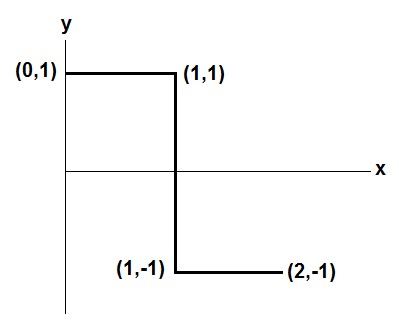Bent Wire Moment

A bent wire of mass M has the geometry shown above. The wire's moment of inertia with respect to the y -axis can be expressed as:
I y = B A M
If A and B are co-prime positive integers, what is A + B ?
Note: The wire's mass is uniformly distributed over its length
The answer is 13.
This section requires Javascript.
You are seeing this because something didn't load right. We suggest you, (a) try
refreshing the page, (b) enabling javascript if it is disabled on your browser and,
finally, (c)
loading the
non-javascript version of this page
. We're sorry about the hassle.
2 solutions
I also used numerical integration as a double-check. Fewer abstractions involved that way
Segment #1 (horizontal):
Use moment formula for rod about end
Segment #2 (vertical):
Equivalent to a single point-mass
Segment #3 (horizontal):
Use moment formula for rod about center and use parallel axis theorem
Segment #1:
I y 1 = 4 M 3 1 2 = 1 2 M = 4 8 4 M
Segment #2:
I y 2 = 2 M 1 2 = 4 8 2 4 M
Segment #3:
I y 3 = 4 M 1 2 1 2 + 4 M ( 2 3 ) 2 = 4 8 M + 1 6 9 M = 4 8 2 8 M
Total Moment:
I y = I y 1 + I y 2 + I y 3 = 4 8 4 M + 4 8 2 4 M + 4 8 2 8 M = 4 8 5 6 M = 6 7 M
I solved it in a similar way to Steven Chase, by doing cases on the segments. However, I don't know any formulas so I applied the integration definition of moment of inertia for case 1 and 3, case 2 is a constant radius of 1 so it's just the mass.